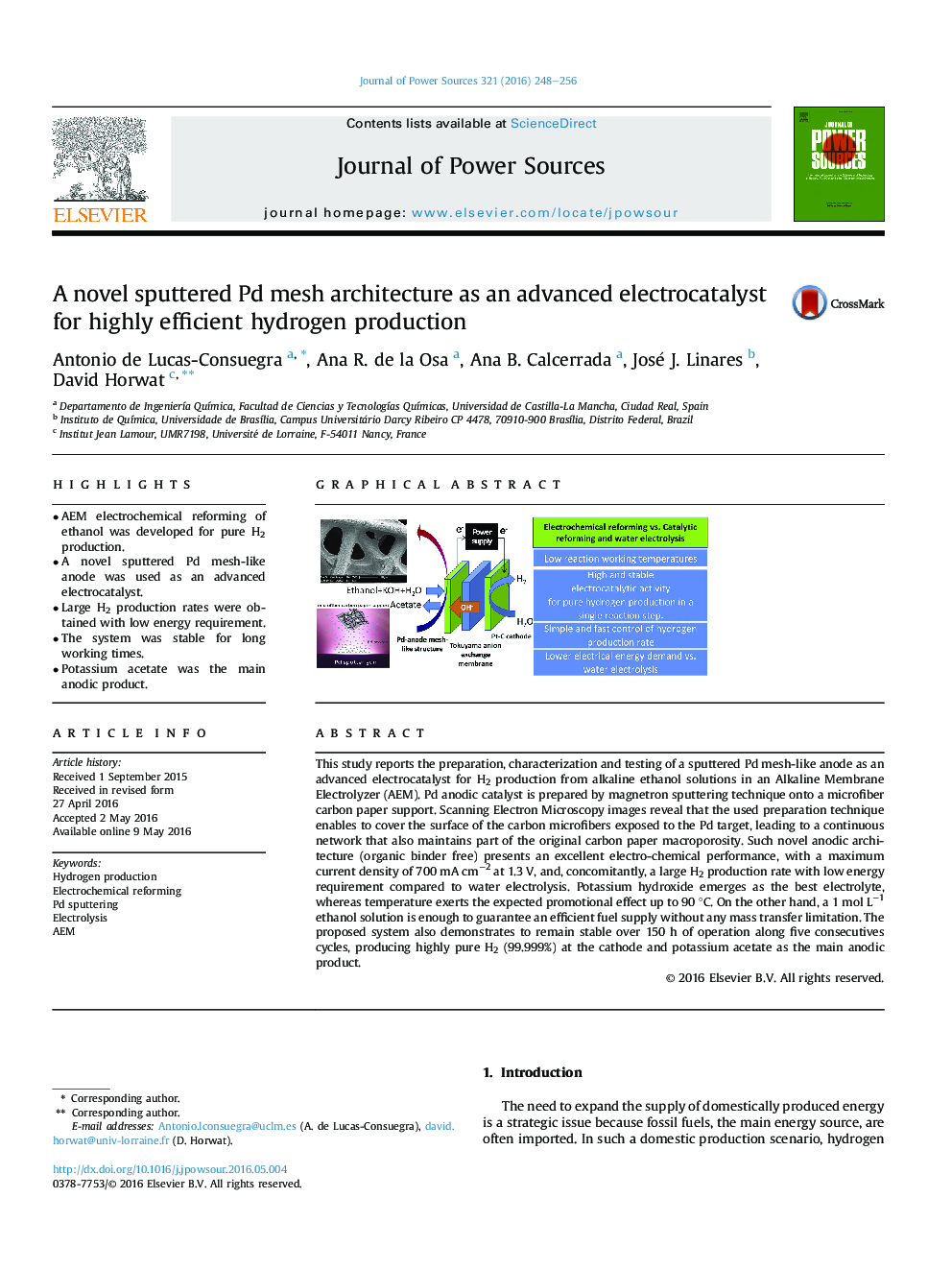| Article ID | Journal | Published Year | Pages | File Type |
|---|---|---|---|---|
| 1291802 | Journal of Power Sources | 2016 | 9 Pages |
•AEM electrochemical reforming of ethanol was developed for pure H2 production.•A novel sputtered Pd mesh-like anode was used as an advanced electrocatalyst.•Large H2 production rates were obtained with low energy requirement.•The system was stable for long working times.•Potassium acetate was the main anodic product.
This study reports the preparation, characterization and testing of a sputtered Pd mesh-like anode as an advanced electrocatalyst for H2 production from alkaline ethanol solutions in an Alkaline Membrane Electrolyzer (AEM). Pd anodic catalyst is prepared by magnetron sputtering technique onto a microfiber carbon paper support. Scanning Electron Microscopy images reveal that the used preparation technique enables to cover the surface of the carbon microfibers exposed to the Pd target, leading to a continuous network that also maintains part of the original carbon paper macroporosity. Such novel anodic architecture (organic binder free) presents an excellent electro-chemical performance, with a maximum current density of 700 mA cm−2 at 1.3 V, and, concomitantly, a large H2 production rate with low energy requirement compared to water electrolysis. Potassium hydroxide emerges as the best electrolyte, whereas temperature exerts the expected promotional effect up to 90 °C. On the other hand, a 1 mol L−1 ethanol solution is enough to guarantee an efficient fuel supply without any mass transfer limitation. The proposed system also demonstrates to remain stable over 150 h of operation along five consecutives cycles, producing highly pure H2 (99.999%) at the cathode and potassium acetate as the main anodic product.
Graphical abstractFigure optionsDownload full-size imageDownload as PowerPoint slide
